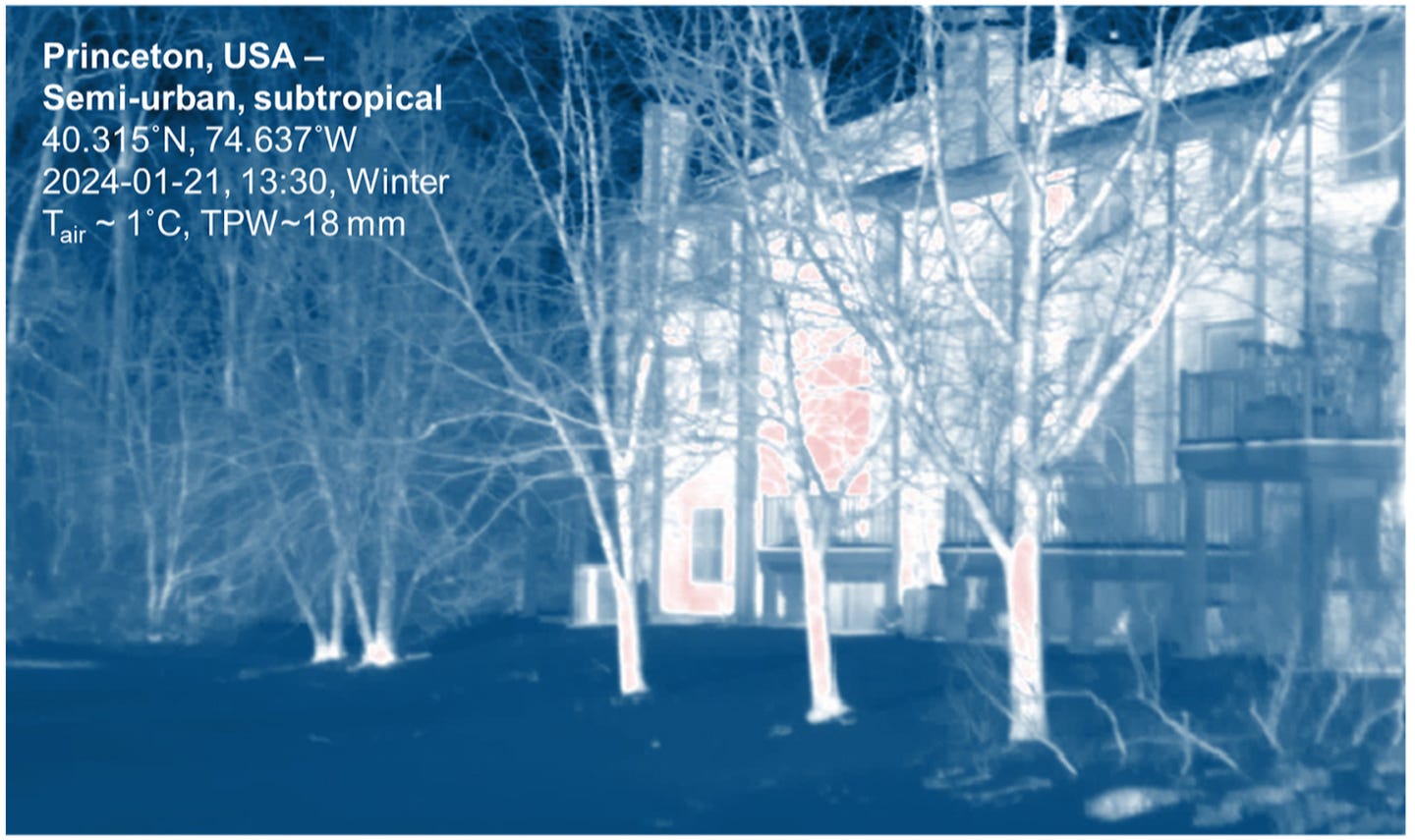Common plastics could passively cool and heat buildings
Researchers have pioneered a novel passive mechanism for building climate control that promises to enhance energy efficiency and comfort.

Researchers at Princeton and UCLA have pioneered a novel passive mechanism for building climate control that promises to enhance energy efficiency and comfort. This breakthrough, detailed in Cell Reports Physical Science, involves modifying the way buildings interact with radiant heat. By focusing on specific wavelengths, engineers have developed coatings from everyday materials that outperform traditional building envelopes.
“With global temperatures on the rise, keeping buildings habitable is a worldwide challenge,” stated Jyotirmoy Mandal, assistant professor of Civil and Environmental Engineering at Princeton. “Buildings primarily exchange heat with their environment through radiation. By fine-tuning the optical properties of building envelopes to manipulate radiation, we can regulate indoor temperatures more effectively.”
Radiant heat, a form of electromagnetic radiation, is a familiar phenomenon; it’s the warmth felt from sunlight or an electric heater. Conventional methods to manage building temperature include using window shades to block sunlight and painting roofs and walls white to reflect heat. Historical examples can be seen in the reflective white roofs of Santorini, Greece, and Jodhpur, India.
“In these historic cities, reflective coatings for cooling have been used for centuries,” said Aaswath Raman, associate professor of Materials Science and Engineering at UCLA. “Modern interest in cool roof coatings has surged, but managing heat through walls and windows presents a more intricate challenge.”
Roofs, with their unobstructed view of the sky, can efficiently reflect sunlight and radiate heat away. However, walls and windows, often surrounded by hot streets and neighboring buildings, face a more complex situation. In summer, they absorb heat from their surroundings, while in winter, they lose heat to the cold ground.
The researchers discovered that heat transfer between buildings and the sky occurs in a narrow infrared spectrum called the atmospheric transmission window, or narrowband. In contrast, heat transfer at ground level spans a broader infrared spectrum, referred to as broadband.
Related Stories
“By using coatings that only interact with heat in the atmospheric window, we can minimize heat absorption from the ground during summer and reduce heat loss in winter, all while benefiting from the cooling effect of the sky,” explained Mandal. “This concept surpasses the capabilities of conventional building materials.”
The study highlights two key reasons for excitement. First, the team found that many inexpensive, common building materials already exhibit the desired heat-radiating properties. For instance, polyvinyl fluoride, a material used in siding, and even household plastics like polypropylene can be repurposed for thermal regulation.
“We were thrilled to discover that materials like polypropylene selectively manage heat in the atmospheric window,” Raman noted. “These everyday materials are scalable, suggesting they could soon be used widely to thermoregulate buildings.”
Secondly, the potential energy savings are considerable. The researchers demonstrated that their method could yield seasonal energy savings comparable to those achieved by painting dark roofs white. This innovation comes at a crucial time, as air conditioning costs and heat-related deaths are escalating globally. Mandal and Raman plan to further explore the potential of this mechanism.
“Our proposed method is entirely passive, making it a sustainable option for seasonal heating and cooling, unlocking new energy savings,” Mandal said. “The benefits are most significant for buildings in the global south, offering a more equitable solution for resource-poor communities facing growing cooling demands and heat-related mortality.”
This passive mechanism has the potential to revolutionize building design, making structures more energy-efficient and comfortable year-round. As the climate crisis intensifies, such innovations are essential for creating sustainable, livable environments.
Besides Mandal and Raman, the authors include Jyothis Anand, of Oak Ridge National Lab; John Brewer, of UCLA; Sagar Mandal, independent researcher, and Arvind Ramachandran, of Arizona State University. Support for the project was provided in part by the Schmidt Science Fellowship, the Alfred P. Sloan Foundation, and the National Science Foundation.
Note: Materials provided above by The Brighter Side of News. Content may be edited for style and length.
Like these kind of feel good stories? Get the Brighter Side of News' newsletter.
Joshua Shavit
Science & Technology Writer | AI and Robotics Reporter
Joshua Shavit is a Los Angeles-based science and technology writer with a passion for exploring the breakthroughs shaping the future. As a contributor to The Brighter Side of News, he focuses on positive and transformative advancements in AI, technology, physics, engineering, robotics and space science. Joshua is currently working towards a Bachelor of Science in Business Administration at the University of California, Berkeley. He combines his academic background with a talent for storytelling, making complex scientific discoveries engaging and accessible. His work highlights the innovators behind the ideas, bringing readers closer to the people driving progress.



